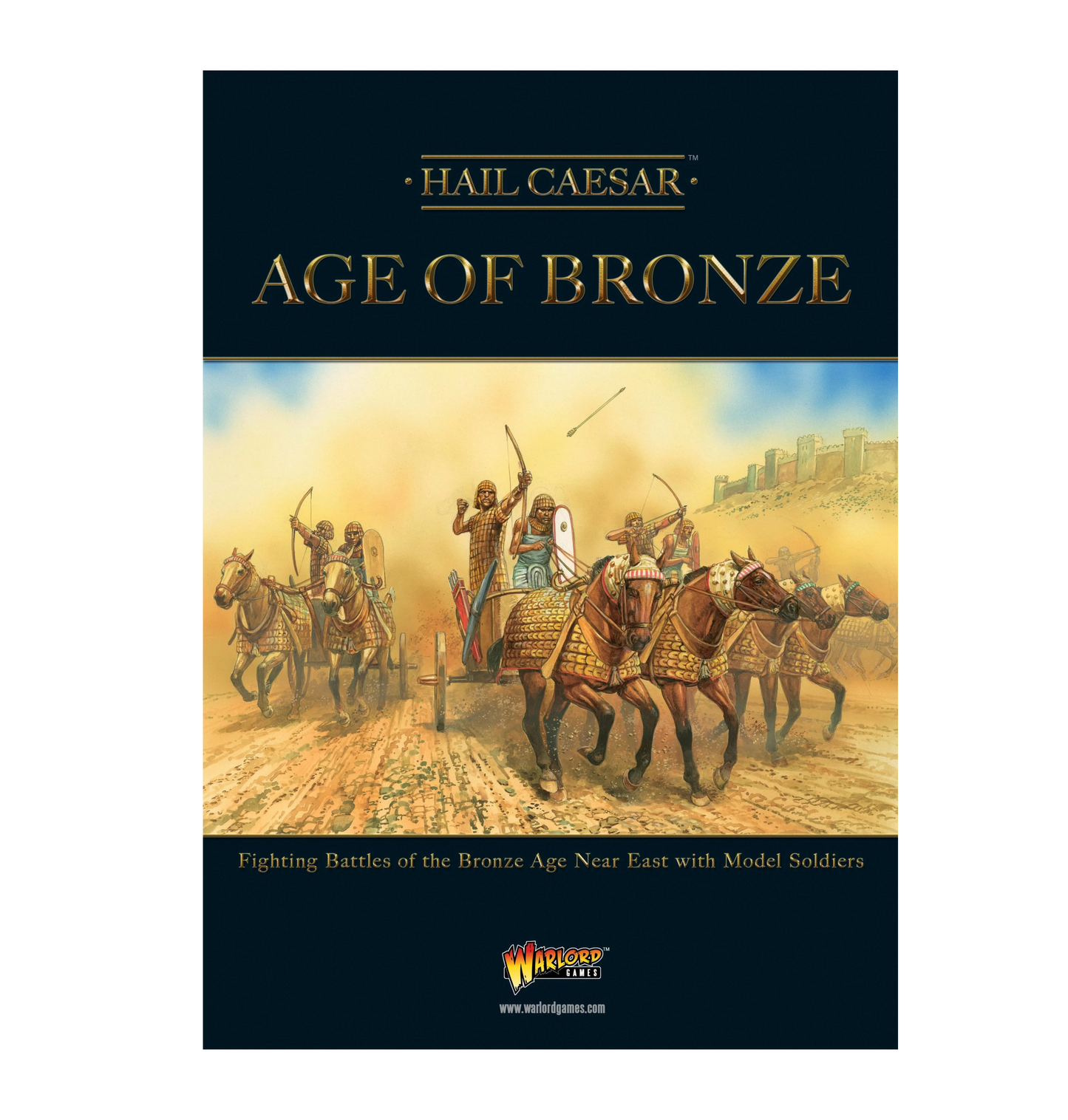Warlord Games
Hail Caesar Age of Bronze
Couldn't load pickup availability

Disclaimer: This is not a physical product. You will receive a digital download of your eBook after your purchase.
This book is all about fighting battles of the Bronze Age with model soldiers. It is a supplement for the Hail Caesar rulebook. The Bronze Age is the early part of the Ancient era. It is also the greater part of the Biblical era and the Chariot age. The Bronze Age is so called because weapons and armour were mainly made of bronze which is an alloy of copper and tin. It is a bright, gleaming, hefty reddish coloured metal. This metal was used in the time before techniques of smelting and working iron were discovered or widely known. Iron is a cheaper and more abundant metal which is harder, lighter and can be honed to be sharper. In the Bronze Age, anyone who had a bronze weapon had a certain amount of status and a warrior with two or three weapons and some armour was likely to be a noble or in the retinue of a lord. Many of their tribal opponents were still armed with Stone Age weapons and clad in animal hides for armour. Initially, iron was not superior to bronze, but as it was easier to find iron ore, more warriors could be armed with a good weapon and so the warrior nobility no longer had the edge over the tribesman.The Bronze Age begins almost at the same time as the invention of writing and the building of the first cities, around 3000 BC and comes to an end (that is it transforms into the Iron Age) around 1200 BC. Of course, the changes are more gradual than these dates might imply. Copper weapons were in use before the Bronze Age and bronze continued to be used for weapons and especially armour long after iron swords and spears were in use. The end of the Bronze Age coincides with the fall of the mighty empires of Egypt, the Hittites and the Mycenaean Greeks. According to Greek legendary history, the fall of Troy marked the end of the ‘Heroic Age’ of bronze. The beginning of the Iron Age coincides with the rise of the empires of Assyria and Babylon and the Israelite kingdoms. The Old Testament, which is a source for many battles, spans both the Bronze and Iron Ages.
Share


